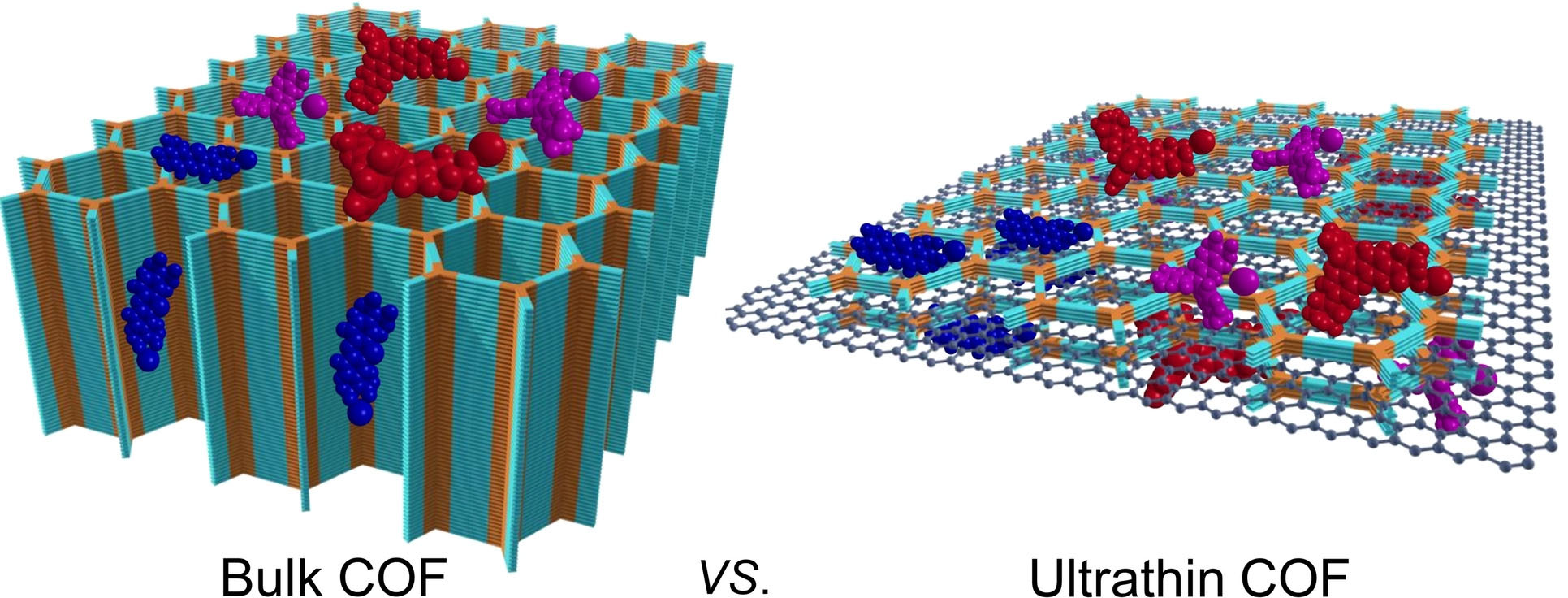Covalent Organic Frameworks – Design and Function
Definition: Covalent Organic Frameworks (COFs) are crystalline, porous materials composed of light elements (such as hydrogen, boron, carbon, nitrogen, and oxygen) interconnected by strong covalent bonds. These frameworks are distinguished by their regular structures and high surface areas.

Comparison to Metal-Organic Frameworks (MOFs)
While COFs share some similarities with Metal-Organic Frameworks (MOFs), such as high porosity and structural diversity, they stand apart in several key aspects. COFs are composed entirely of organic materials, leading to potentially greater chemical stability and thermal resistance compared to MOFs, which include metal ions or clusters. This organic composition of COFs allows for a lighter material, which can be advantageous in applications where weight is a concern.
Structure and Properties
COFs feature a unique combination of strength, lightness, and porosity, thanks to their covalent bonds. These materials are capable of self-assembly into ordered structures, which can be precisely tuned for specific applications by selecting appropriate organic building blocks.
Synthesis Methods
Synthesis of COFs typically involves solvothermal techniques, where organic monomers undergo condensation reactions to form extended networks. The process aims for crystalline products with high surface areas, which are critical for applications in gas storage, catalysis, and more.
Common condensation reactions used in the synthesis of COFs include:
- Boronate Ester Formation: Involves the reaction of boronic acids with diols to form boronate esters, creating a robust framework through reversible covalent bonds.
- Schiff Base Formation: A reaction between an aldehyde and an amine to form a Schiff base (imine), which provides a stable linkage through nitrogen-carbon double bonds.
Applications
- Gas Storage and Separation: COFs excel in these areas due to their adjustable pore sizes and functionalities.
- Catalysis: Their ability to host catalytically active sites makes them useful in facilitating various chemical reactions.
- Sensing and Detection: COFs can be engineered to selectively interact with specific molecules, making them effective in sensing applications.
- Energy Storage and Conversion: The structural properties of COFs are beneficial in the development of batteries and photovoltaic cells.
Challenges and Future Directions
The synthesis of large-scale, defect-free COFs and their long-term stability in various environments are areas of ongoing research. Advances in these areas will help expand the practical applications of COFs in industry and technology.
Further Reading
Chemical Reviews, Covalent Organic Frameworks: Design, Synthesis, and Functions
Nature Reviews Methods Primers, Covalent Organic Frameworks
